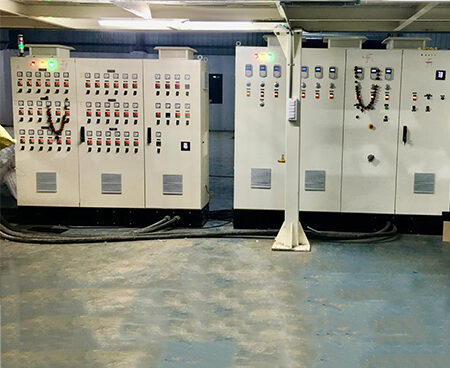Yesha Electricals is a leading manufacturer and supplier of VFD panels.
AC motor speed is controlled in two ways – either by controlling the voltage or frequency. Frequency controlling gives better control due to constant flux density than voltage control. This is where the working of VFDs comes to play. It is a power conversion device that converts the fixed voltage, fixed frequency of the input power to the variable voltage, the variable frequency output to control AC induction motors.
It consists of power electronic devices (like IGBT, MOSFET), high speed central controlling unit (such as a microprocessor, DSP), and optional sensing devices depending on the application used.
Most of the industrial applications require variable speeds at peak load conditions and constant speeds at normal operating conditions. Closed-loop working of VFDs maintains the speed of the motor at a constant level, even in case of input and load disturbances.

Benefits of VFD
VFD connected to the motor
Variable frequency drives not only offer adjustable speeds for accurate and precise control applications but also have more benefits in terms of process control and conservation of energy. Some of these are given below.
Energy saving
More than 65% of the power is consumed by electric motors in industries. Both magnitude and frequency control technique to vary the speed consumes less power when variable speed is required by the motor. So a great amount of energy is conserved by these VFDs.
Closed-loop controlling
VFD allows accurate positioning of the motor speed by continuously comparing with reference speed even at changes in the loading conditions and input disturbances like voltage fluctuations.
Limits starting current
Induction motor draws current which is 6 to 8 times the nominal current at starting. Compared to conventional starters, VFD’s gives better results because it delivers low frequency at the time of starting. Due to low frequency, the motor draws less current and this current never exceeds its nominal rating at starting as well as operating.
Smooth operation
It offers smooth operations at starting and stopping and also reduces thermal and mechanical stress on motors and belt drives.
High power factor
The inbuilt power factor correction circuit in the DC link of VFD reduces the need for additional power factor correction devices.
The power factor for the induction motor is very low for particularly no-load application, while at full load, it is 0.88 to 0.9. Low power factor results in poor utilization of power due to high reactive losses.
